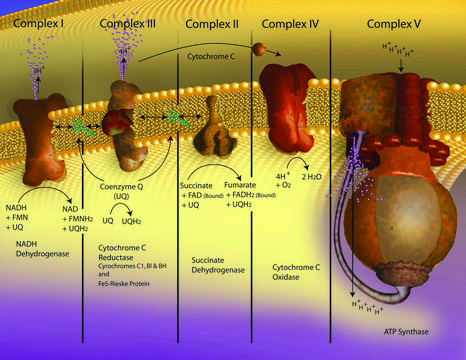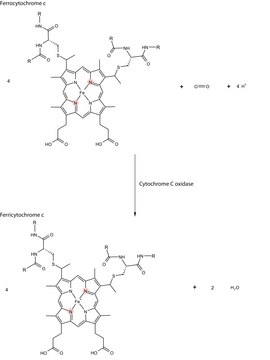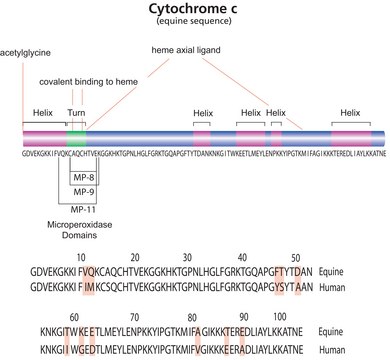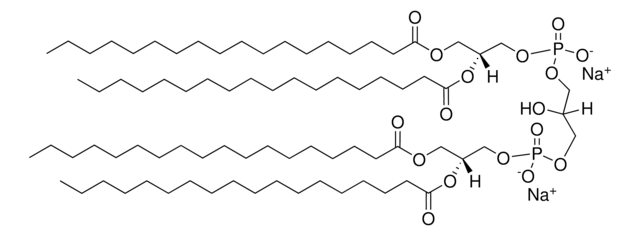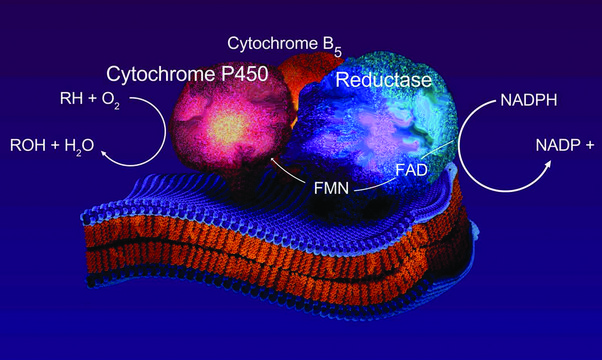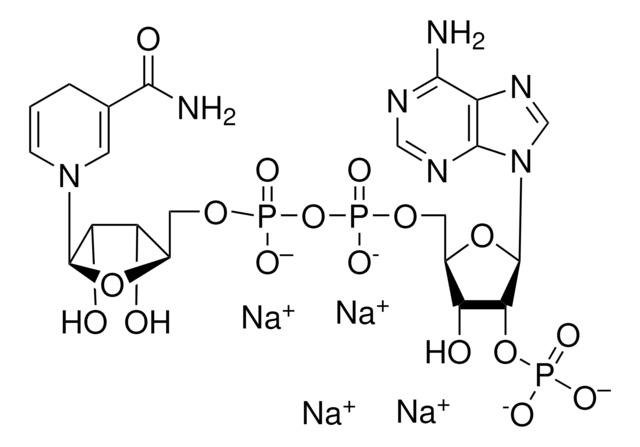C2436
Cytochrome c from Saccharomyces cerevisiae
≥85% based on Mol. Wt. 12,588 basis
Se connecterpour consulter vos tarifs contractuels et ceux de votre entreprise/organisme
About This Item
CAS Number:
Numéro CE :
Numéro MDL:
Code UNSPSC :
12352202
Nomenclature NACRES :
NA.61
Produits recommandés
Source biologique
Saccharomyces cerevisiae
Niveau de qualité
Essai
≥85% based on Mol. Wt. 12,588 basis
Forme
powder
Poids mol.
12,588 Da
Technique(s)
cell based assay: suitable
Solubilité
water: 10 mg/mL, clear, red to red-brown (dark red)
Numéro d'accès UniProt
Application(s)
cell analysis
Température de stockage
−20°C
Informations sur le gène
Saccharomyces cerevisiae ... CYC1(853507)
Description générale
Cytochrome c (Cytc) comprises 104 amino acids and is a nuclear-encoded mitochondrial protein. This peripheral membrane protein is in spherical shape and has a molecular weight of 12,000 Da.
Application
Cytochrome c from Saccharomyces cerevisiae has been used in oocyte injection to induce caspase-3 activation and p38 MAPK (mitogen-activated protein kinase). It has also been used to analyze the aerobic reactions of nitric oxide.
Actions biochimiques/physiologiques
Cytochrome c (Cytc) participates in mitochondrial electron transport and intrinsic type II apoptosis. It plays a key role in aerobic energy production. This multi-functional enzyme serves as a single electron carrier. Cytc helps in the formation of the apoptosome.
The ready fluctuation of cytochrome c within the cell between ferrous and ferric states, makes it an efficient biological electron-transporter. It plays a vital role in cellular oxidations in both plants and animals. Generally regarded as a universal catalyst of respiration, it forms the essential electron-bridge between the respirable substrates and oxygen.
The ready fluctuation of cytochrome c within the cell between ferrous and ferric states, makes it an efficient biological electron-transporter. It plays a vital role in cellular oxidations in both plants and animals. Generally regarded as a universal catalyst of respiration, it forms the essential electron-bridge between the respirable substrates and oxygen. Tracking cellular localization of cytochrome c in S. cerervisiae demonstrates that mitochondria are strongly involved in programmed cell death, a process very similar to apoptosis in higher organisms.
Qualité
Care has been taken to maintain the native form of the protein. It has not been artificially oxidized or reduced during purification. Contains variable amounts of reduced cytochrome c.
Notes préparatoires
Prepared without using TCA.
Autres remarques
View more information on cytochrome c and electron transport at www.sigma-aldrich.com/enzymeexplorer.
Code de la classe de stockage
11 - Combustible Solids
Classe de danger pour l'eau (WGK)
WGK 3
Point d'éclair (°F)
Not applicable
Point d'éclair (°C)
Not applicable
Équipement de protection individuelle
Eyeshields, Gloves, type N95 (US)
Faites votre choix parmi les versions les plus récentes :
Déjà en possession de ce produit ?
Retrouvez la documentation relative aux produits que vous avez récemment achetés dans la Bibliothèque de documents.
Les clients ont également consulté
Notre équipe de scientifiques dispose d'une expérience dans tous les secteurs de la recherche, notamment en sciences de la vie, science des matériaux, synthèse chimique, chromatographie, analyse et dans de nombreux autres domaines..
Contacter notre Service technique